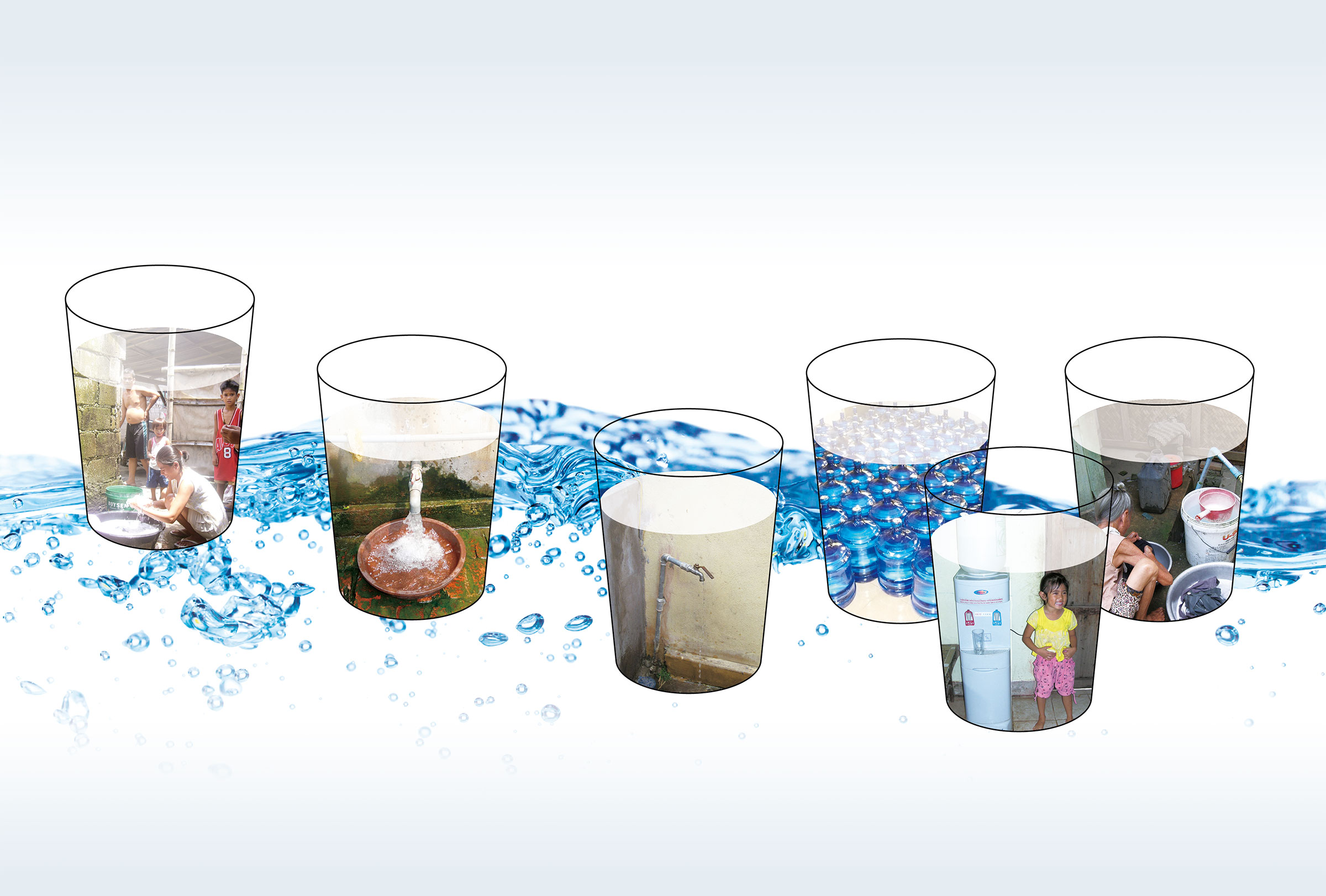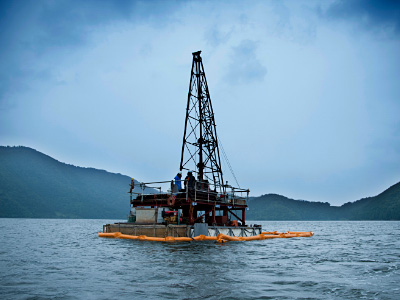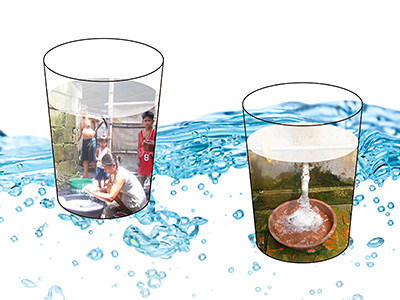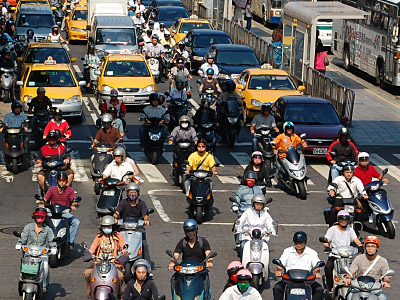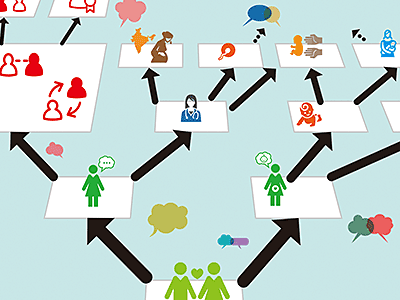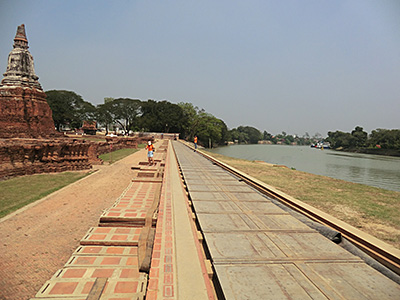STORY #7
The crisis to save
the drinking water in Asia.
- Phillipines
- Laos
- Vietnam
Toshiyuki Shimizu
Senior Researcher,
Ritsumeikan Global Innovation Research Organization
Supplying
safe and delicious
water to all.
Turn on a water faucet, and safe and clean water comes out in an endless stream. Such a common scene in Japan, however, is rather rare in many other parts of the world. In developing countries, it certainly cannot be said that the facilities to supply safe drinking water have been introduced sufficiently. In many cases, tap water and water purification facilities are available in metropolitan areas only, and once you move away from cities, the condition of the water supply changes drastically.
"ODAs have carried out projects to develop water supply infrastructures in developing countries. Additionally, in recent years, there has been an increase in the large-scale investments in overseas infrastructure facilities by private companies," says Toshiyuki Shimizu, who is studying the stable and efficient use of water resources in Japan and overseas.
"Some people may wonder why, but it is actually difficult to continually supply safe drinking water by only improving the hardware."
First of all, even with a water supply infrastructure, the quality of the drinking water is still not at an appropriate level for drinking in some cases. Even if disinfection facilities have been installed and the quality of water has become suitable for drinking at water purification facilities, there are the possibilities of contamination by pathogenic microorganisms or pollutants before it reaches the faucet due to low water pressure and intermittent water supply. Furthermore, the situation may be good initially, when the facilities to supply drinkable water are first introduced by an ODA, but over time, the expansion of water supply facilities, the reconstruction of pipeline system and the maintenance of aging facilities become a necessity. "In short, money and human resources are insufficient," Shimizu says.
"For this reason, in developing countries, even after the introduction of water supply facilities, these facilities cannot be properly maintained or even continue to operate in many areas."

In developing countries with limited economic resources, what should be done to develop a sustainable system to supply clean and safe water? Shimizu proposes a "hybrid water-supply system" that incorporates both a "water supply via distribution pipeline" and a "drinking water supply by bottled water."
In developing countries, people boil tap water, buy home water purifier kits or simply purchase water in order to secure safe drinking water. Water for purchase includes water wagons, such as tanker trucks, personally sold bottled spring or ground water and bottled water from private beverage manufacturers.
The approach devised by Shimizu and his team is as follows. For purposes that do not require strict water quality or for uses apart from drinking, tap water will be used, and for drinking, bottled water will be purchased. However, bottled water will be supplied not by conventional private manufacturers or individuals, but by a water utility who will bottle highly safe water treated at a purification facility and then sell it at a lower price than general bottled water.
"The point is that without a need for large-scale facility investments, residents can have safe, low-cost drinking water. At the same time, water utilities can invest their profits from the sale of bottled water in the maintenance, management, renewal and expansion of distribution pipes and water purification facilities," Shimizu says.
By doing so, safe drinking water may be supplied via conventional water supply system in the future. Possibilities not conventionally available can be found in this "sustainable water supply system."



Is this hybrid water-supply system feasible? To confirm if it was, the field surveys had conducted in the Philippines, Laos and Vietnam. The primary contents of the field survey were interview to water utilities, questionnaire to residents, and collection of metered water consumption data.
The results of the surveys revealed that the utilization ratio of purchased water is as high as 60 to 90% in parts of the Philippines and Laos, while in Vietnam, it is as low as 1.6 to a maximum of 18%.
Looking at the cost associated with water as portion of household income, it comes to about 3 to 7%, which includes water charges and water purchasing costs in these three countries. As an OECD (Organization for Economic Cooperation and Development) report says, "Expenses for water and sanitation services should be around 3 to 5%," so the former values represent what is deemed a "costly expense" for a household.

"While business profitability should be taken into consideration, it is reasonable to reduce the price of bottled water to about half the market price and then maintain the purchasing cost of bottled water to within 3% of household income," Shimizu explains. "For low income households whose water cost exceeds 10% of their income, governments and municipalities should provide subsidies. In this way, the feasibility of an introduction will increase."
The variety of situations at water utilities, such as rainfall, historical and cultural background, geography and economic factors, are diverse depending on the country or region. Shimizu says, "It is important to propose systems that are indeed suitable for these individual characteristics."
The demand for safe water is ever increasing in the Asian region. The key is small businesses full of ideas that are not available from large-scale investments.
This is where Shimizu can fully display his skills.

Toshiyuki Shimizu
Senior Researcher,
Ritsumeikan Global Innovation Research Organization
Subject of Research: Clarification of water usage and its’ forecasting in order to develop water circulation systems
Research Keywords: Sanitary engineering, Water supply planning
